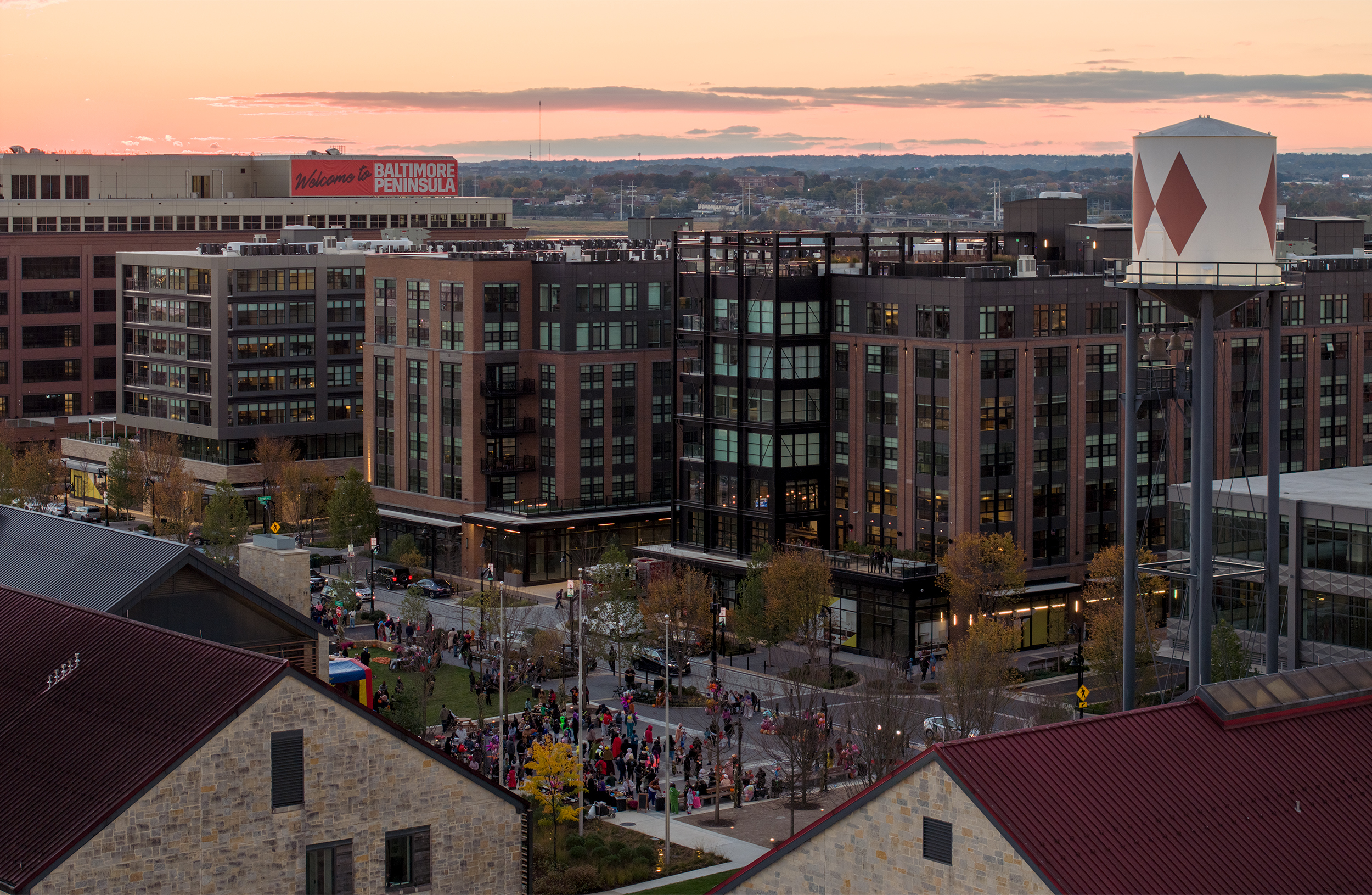The Short Version
- Public-private partnerships are proving essential to advancing large-scale mixed-use development in Baltimore and other cities.
- More than $3 billion has been invested across 231.5 acres of the city’s historic waterfront.
- Projects like Baltimore Peninsula, Harbor East, Harborplace and the South Baltimore Gateway Master Plan are reshaping the regional economy.
- GBC president and CEO Mark Anthony Thomas says partnerships, layered financing and clear leadership keep megaprojects moving forward.
Baltimore’s Revitalization Highlights How Collaboration and Public-Private Partnerships Drive Successful Mixed-Use Development
Large-scale development projects demand substantial capital, patience and perseverance. But when done well, they can transform cities and drive economic benefits for years to come.
C+CT contributing editor Beth Mattson-Teig spoke with Greater Baltimore Committee president and CEO Mark Anthony Thomas about how public entities view these massive public-private endeavors. The GBC represents the private sector in conversations advancing economic development and competitiveness across the Baltimore region, including the reshaping of 231.5 acres along its historic waterfront, where more than $3 billion has been invested across a series of mixed-use real estate projects designed to enhance living, commerce and recreation.

Greater Baltimore Committee president and CEO Mark Anthony Thomas Photo courtesy of the Greater Baltimore Committee
What trends are shaping mixed-use megaprojects today, particularly in financing, design, location and public-private partnerships?
What’s working now are projects that actually build community. They’re less about a single use and more about mixing thousands of housing units with retail, green space, flexible commercial space and sometimes light manufacturing if zoning allows. Developers who take that approach are creating neighborhoods, not just developments. And with office demand still shaky, I’m a big believer that more housing is what makes these projects viable.
More From C+CT
Mixed-Use Megaprojects: Turning Locations Into Destinations
Building Success: What It Takes To Deliver Mega Mixed-Use Projects
What Baltimore-area projects best illustrate these trends?
In Baltimore, we have several megaprojects shaping the future of the city. Baltimore Peninsula is transforming an underutilized waterfront and building a new neighborhood in an untapped area. Harbor East is evolving into a premier live-work district. Harborplace is being completely reimagined as the city’s central gathering place. The South Baltimore Gateway Master Plan is unlocking whole neighborhoods with coordinated investment. And with Downtown Rise [a 10-year strategic action plan released by Baltimore Mayor Brandon Scott on Oct. 9 in partnership with Maryland Gov. Wes Moore and the Downtown Partnership of Baltimore], we’ve tracked more than $8 billion in projects repositioning the core of the city.

The Baltimore Peninsula project is building a new neighborhood along an underutilized waterfront, according to the Greater Baltimore Committee’s Mark Anthony Thomas. Photos above and at top courtesy of the Greater Baltimore Committee and by Seamus Payne
Across the region, in Howard and Baltimore counties, new industrial and mixed-use developments are setting the stage for long-term growth. Collectively, these represent tens of thousands of housing units, millions of square feet of commercial and retail and billions in investment. That scale will redefine Baltimore’s economy for decades.
Do projects still need a central “anchor” to succeed?
It helps. People still like something that defines a place, whether it’s a historic theater, a cultural institution or the kind of Instagram moment that becomes a local landmark. Anchors give a project gravity. They create a reason for people to come back.
What are the biggest hurdles for these projects, and what creative solutions are helping move them forward?
In post-industrial markets like Baltimore, the first hurdle is often the land itself: assembling sites, cleaning up old uses, modernizing infrastructure. That’s harder than it looks, and it slows everything down. The only way to move forward is partnerships — public, private and philanthropic — all leaning in to unlock tough sites.
How are developers getting deals to pencil out in today’s environment?
With creativity. You rarely see a simple financing structure anymore. Projects get done with layered capital: federal incentives, local tax tools, private equity and now more [environmental, social and governance] funds and impact funds. If the project is strong and the public side is invested, deals can still work.
What role do public entities and communities play in making these projects happen?
They set the vision. Public entities aren’t just partners, they’re co-authors. If zoning, infrastructure and incentives line up with long-term goals, developers have the confidence to move. That’s when a project shifts from being just another build to being something that really advances a region.
Many projects are announced with fanfare but then stall. What does it take to keep momentum going?
The basics: the right team, the right capital and the ability to keep permits, supplies and workforce moving. But it also takes leadership. Projects stall when no one is keeping partners aligned and momentum alive. You almost have to treat it like a campaign: Stay disciplined until the ribbon cutting.